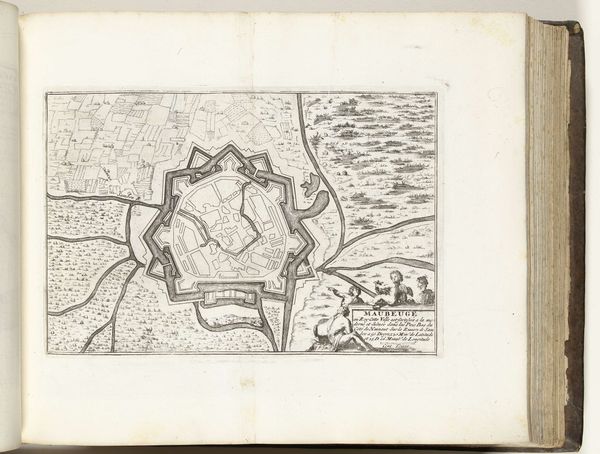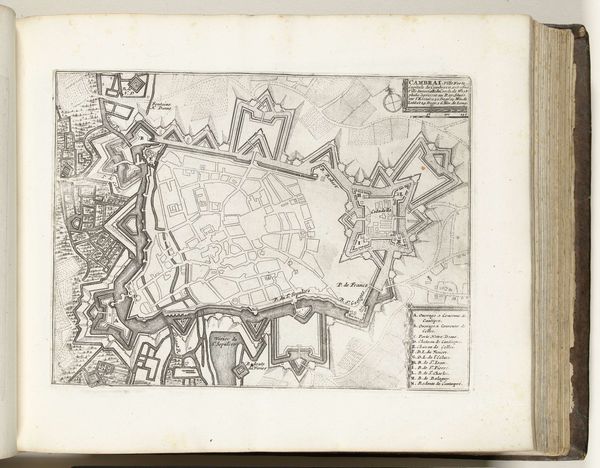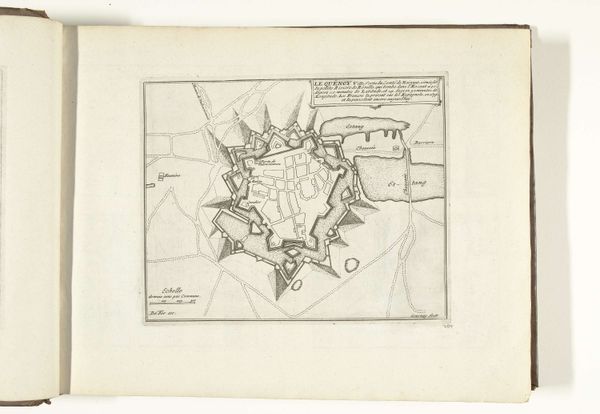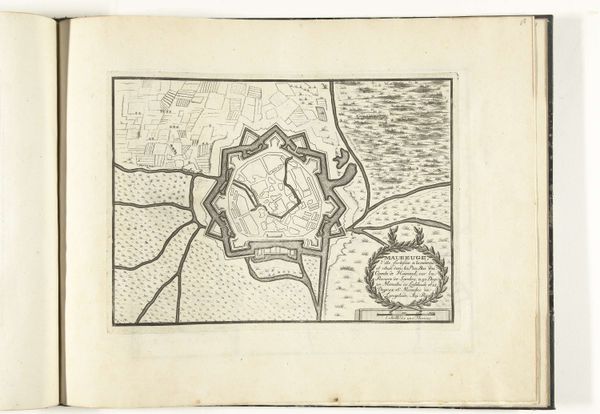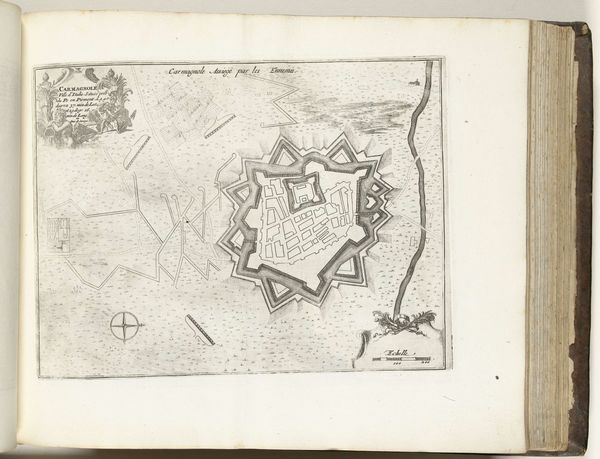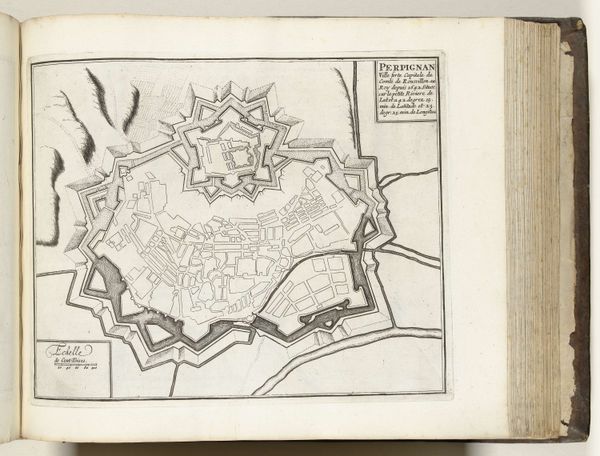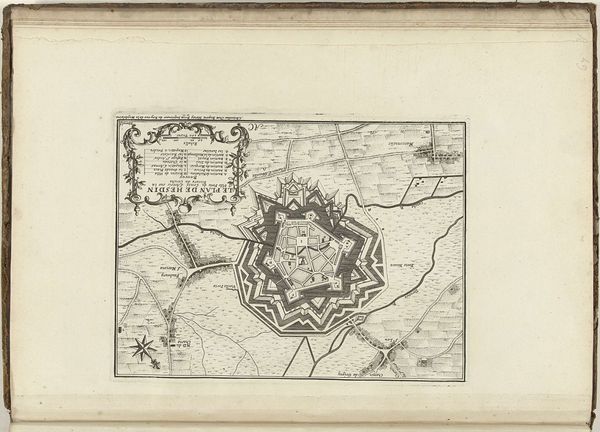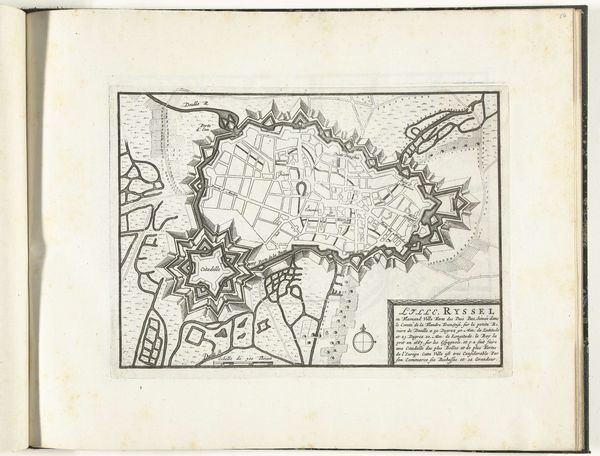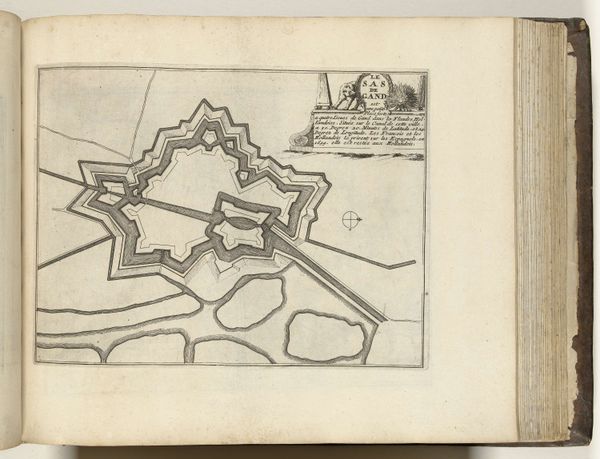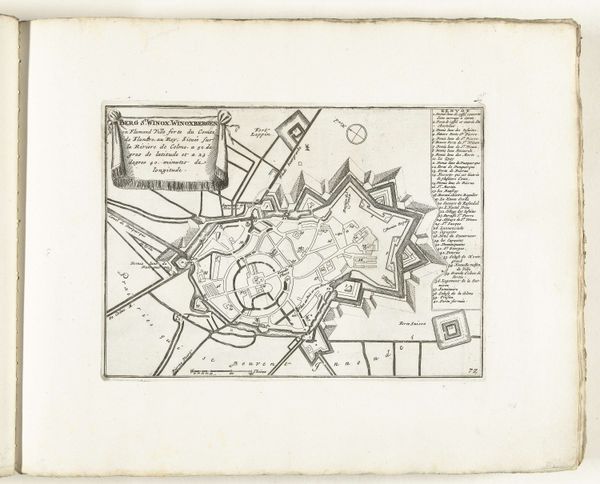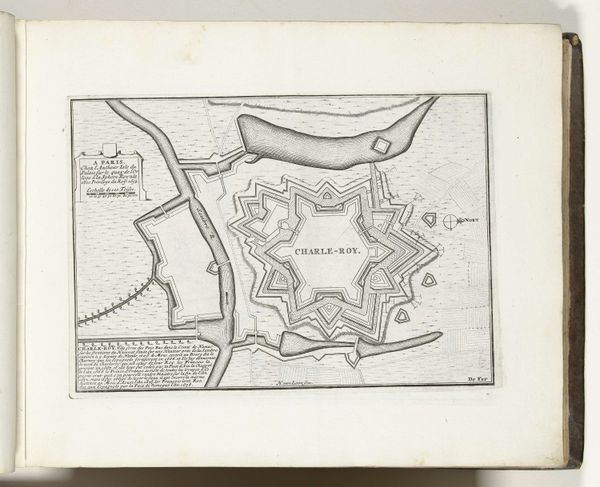
drawing, paper, ink, engraving
#
drawing
#
baroque
#
landscape
#
paper
#
ink
#
geometric
#
cityscape
#
engraving
Dimensions: height 195 mm, width 262 mm
Copyright: Rijks Museum: Open Domain
Curator: This drawing, simply titled "Plattegrond van Pinerolo, 1693," offers a fascinating glimpse into seventeenth-century cartography. Rendered anonymously in ink on paper, it's currently held in the Rijksmuseum's collection. Editor: My initial impression is one of geometric intensity. The fortified city plan, resembling a complex, almost crystalline structure, immediately draws the eye. It's meticulously rendered, but with an ethereal quality. Curator: The rigorous geometric planning visible in the engraving really speaks to Baroque era concerns for order and control, particularly around military strategy. Consider the immense labor involved in producing not just the drawing itself, but in building such fortifications. Who was involved, and how does this fit into the power structures of the time? Editor: Absolutely. The repetitive, star-shaped design creates a fascinating play of positive and negative space, enhanced by the monochromatic palette. Look closely at how the ink is used to define depth and texture in the surrounding landscape— a landscape quite literally shaped by human interventions. Curator: I’m curious about its original purpose. Was it intended for military planning, propaganda, or perhaps record-keeping? What level of access did the average person have to such representations of power? The work's creation also demands that we think about the engraver's skills, apprenticeship, and place in the hierarchy of the art world. Editor: The subtle variations in line weight and density generate an almost mesmerizing sense of rhythm and balance. I see it also as a microcosm of societal ambition—this intense human effort to organize space into near-perfect, fortified geometry. It gives tangible shape to otherwise abstract concerns about order, power, and security. Curator: The creation of something so formally precise relied heavily on a pre-existing network of material suppliers, laborers, patrons and intended audience members. Thinking about these connections, who benefited and who didn’t, opens new insights into the period in which this image was first produced. Editor: Indeed. Examining this engraving solely on its aesthetic merit can sometimes detach it from its historical realities. Thank you, then, for redirecting our analysis toward considering that material grounding to which our eyes may initially remain blind.
Comments
No comments
Be the first to comment and join the conversation on the ultimate creative platform.

